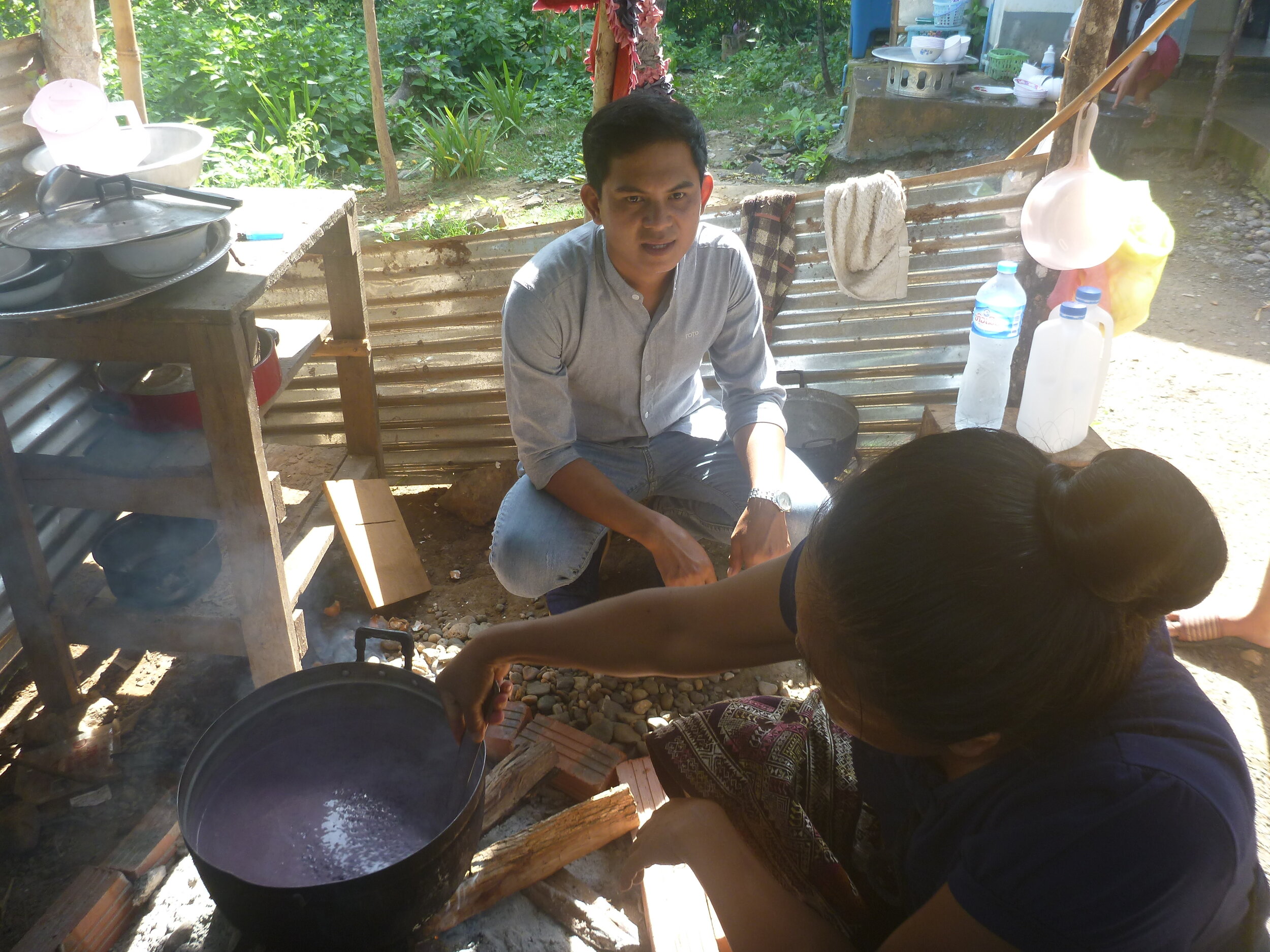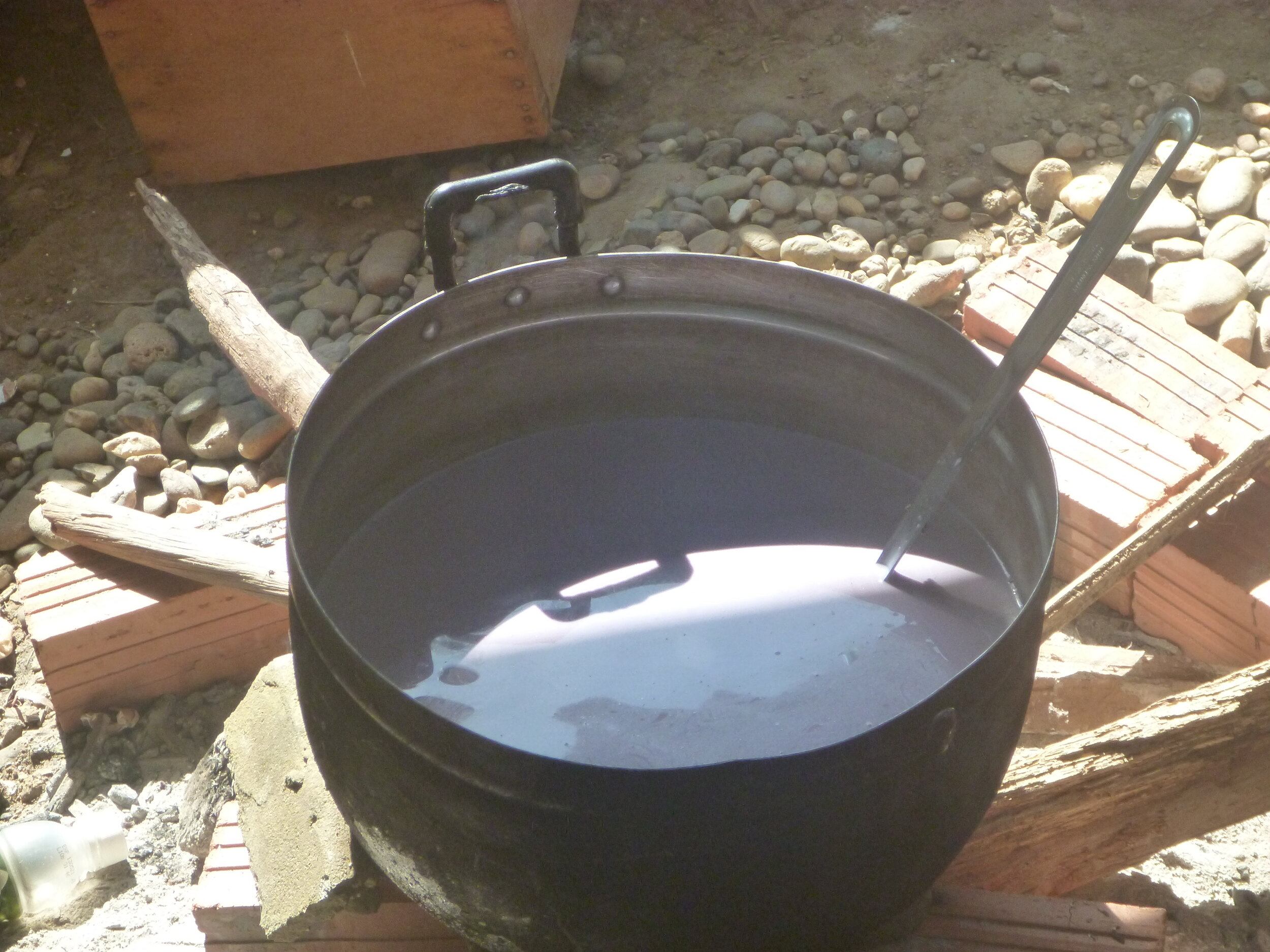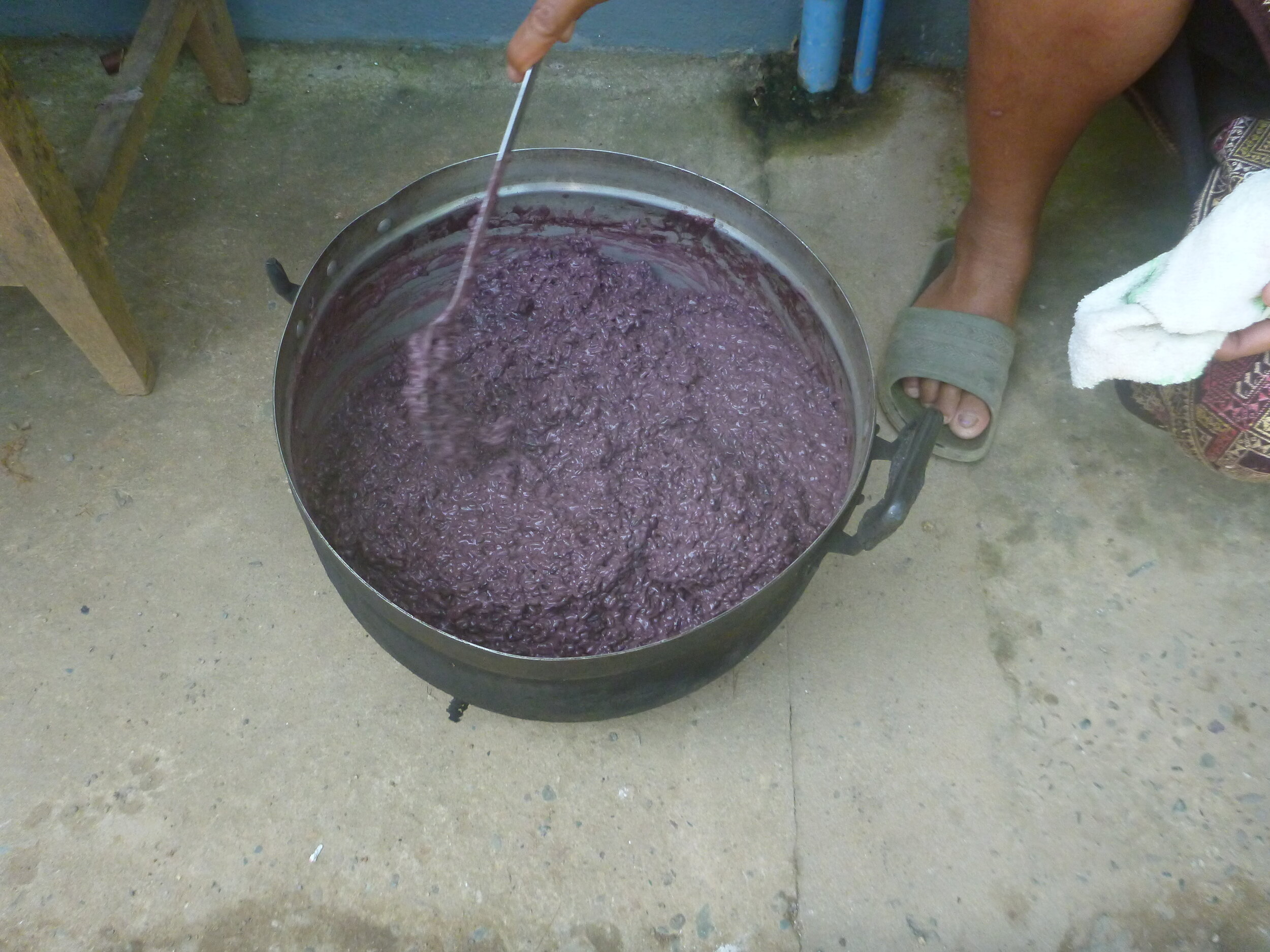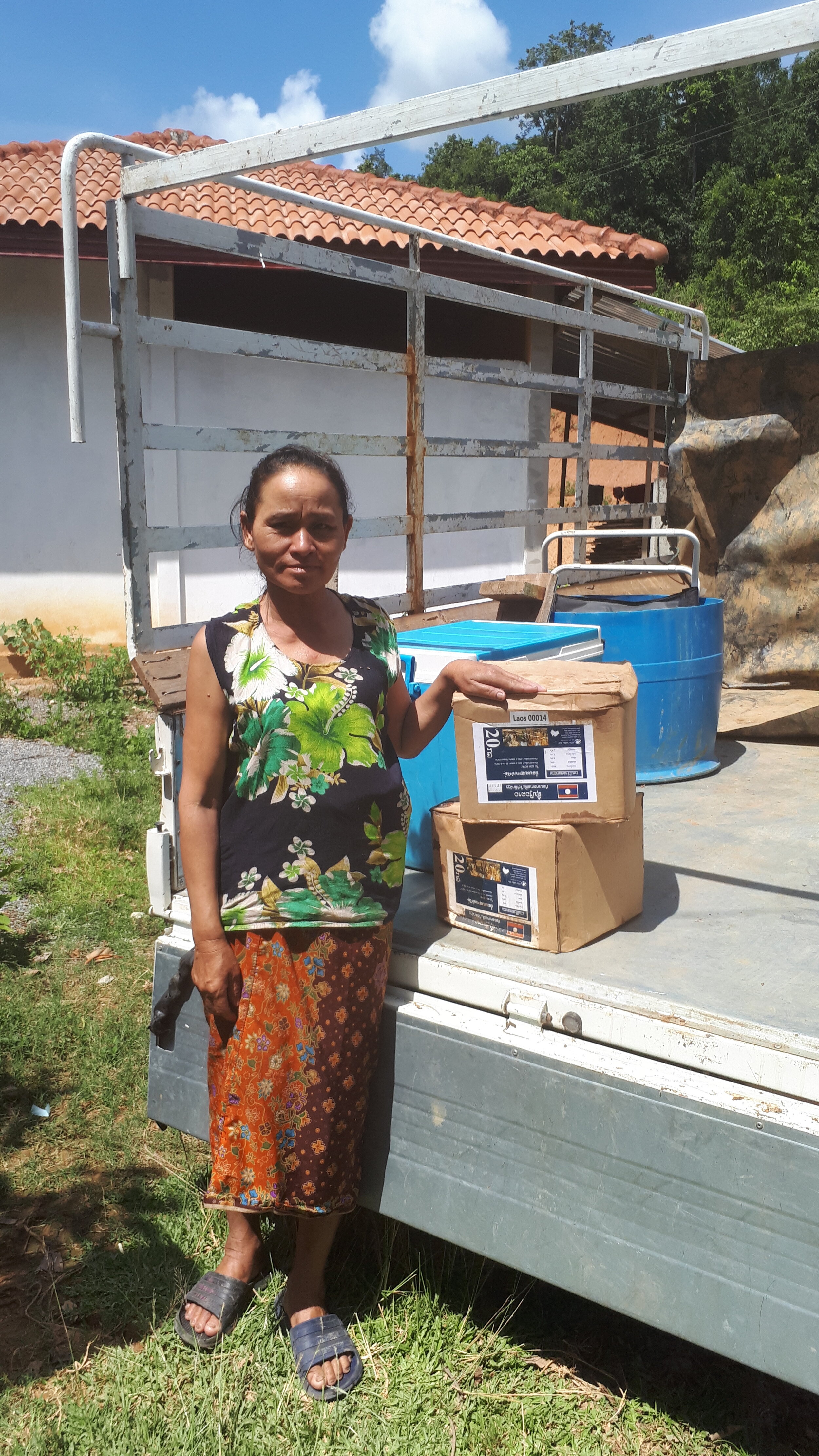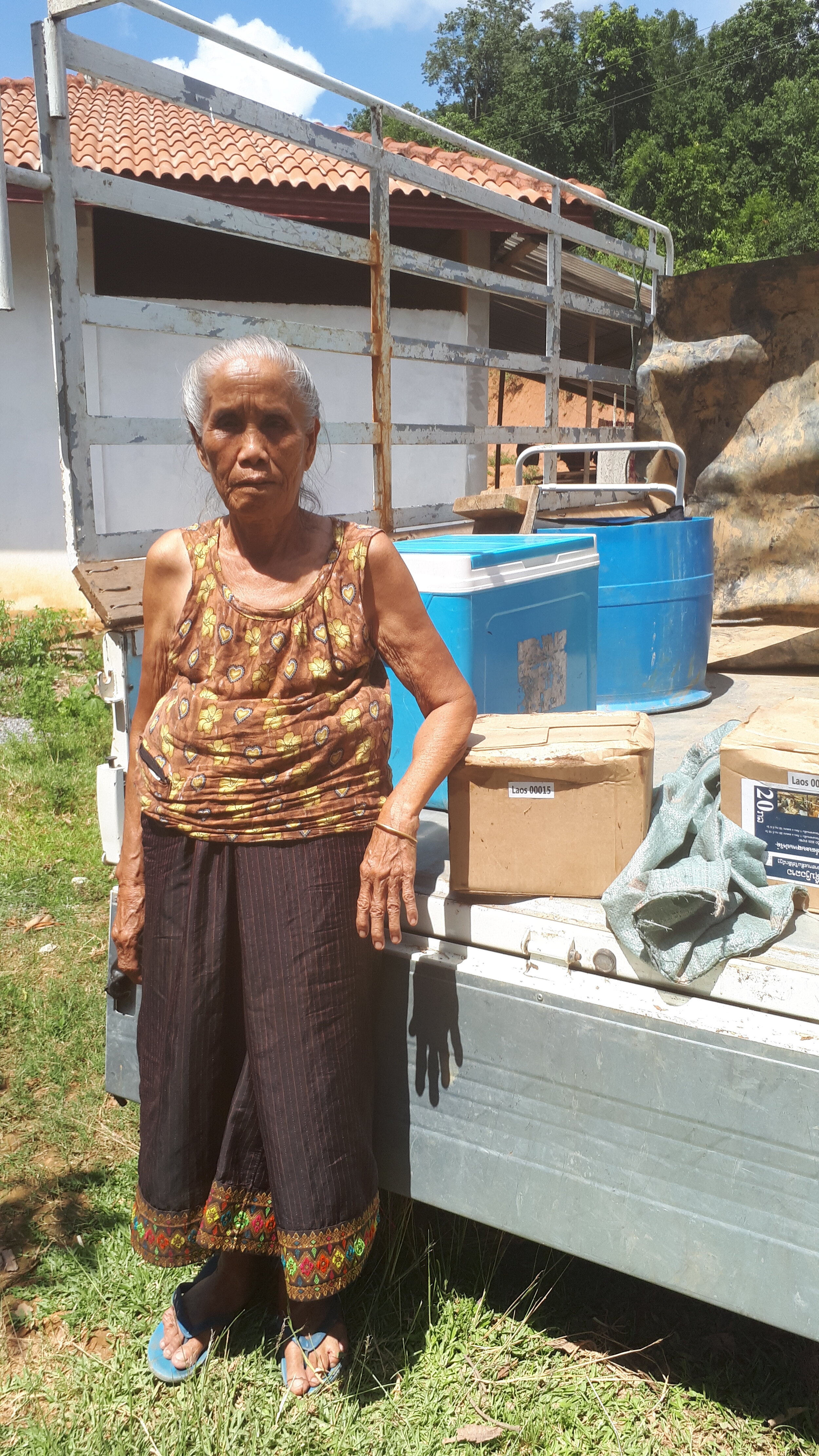Chompet Visit at Ban Ngiew - Nutrition Training, Mineral Block drop offs and buffalo pregnancy checks!
Nutrition Clinic
At 7am on the 29 August, five of us set off in the truck heading to Ban Ngiew on the ferry across the Mekong. The ferry is bustling, 7am might be early in many countries but not in Laos, where the bells chime at 4.30am in the many Wats, for the monks to rise and start collecting alms, and farmers are heading out to the rice paddies to try and beat the heat. At 7am, it’s already a balmy 26 degrees.
As part of our Business Partnership Platform (BPP) project we are working with the Australian Department of Foreign Affairs & Trade (DFAT), Provincial Health Department (PHD) and Northern Agricultural College (NAC). There are two objectives;
to improve breeding & animal husbandry of buffalo
to have healthy buffalo capable of producing milk for the children & families in the village.
Until recently, buffalo milk was an untapped source of protein, calcium & energy!
The BPP programme has allowed the set up of a proof of concept in 5 villages in Northern Laos, three of which are in Chomphet District. As the crow flies, the village is only 11kms from Luang Prabang (LP), by road, it is officially 22kms, and yet the drive takes over an hour because of the poor road condition, and that’s with no rain! In the rainy season add an hour or wait until 2-5 days with no rain, for the chance to get through.
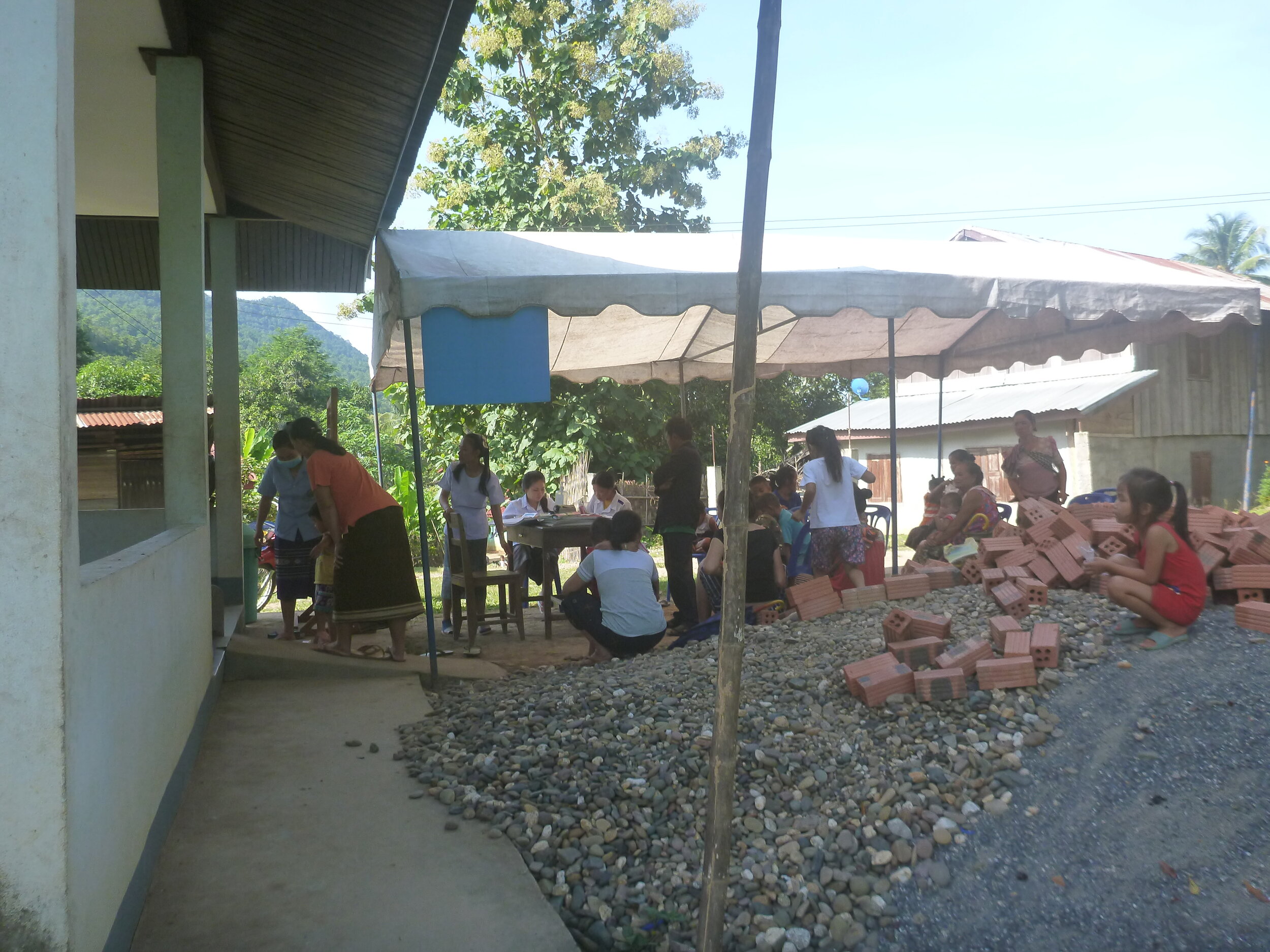
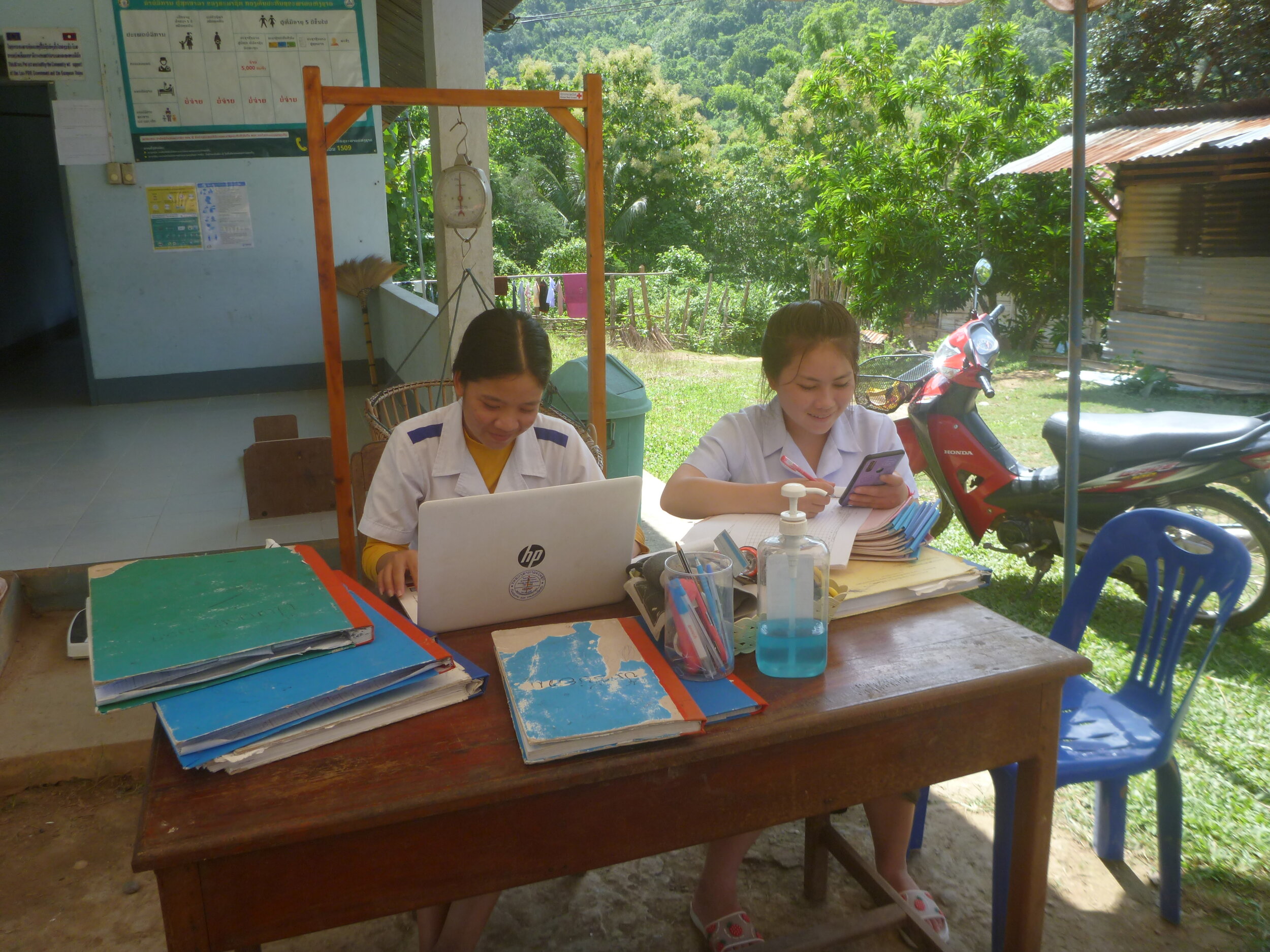
The PHD had notified us they would be carrying out a quarterly health check in the clinic at Ban Ngiew. 1 in 3 children under the age of 5 are chronically malnourished leading to both physical and developmental issues, and the PHD visits villages, to weigh and measure all the children in each village plus conduct education clinics on maternal, newborn and child health (MNCH). With many people attending the clinic, they invited us to conduct a cooking demonstration using buffalo milk.
Cooking Time
Milk has not been a large part of the diet in Laos or Southeast Asia generally. However, buffalo have been ploughing the rice fields and sold for meat for millennia. We met the Village Chief Mr. Khampheng, Mr. Heung and Mrs Pien, a teacher at the local school, who all attended training at Laos Buffalo Dairy in March, just before lockdown restrictions were implemented due to COVID-19. Five months later, they would now have the opportunity to demonstrate part of what they had learnt at the farm on how to cook and prepare the milk. Today Laos Buffalo Dairy (LBD) provided the milk, but soon it will be available in the village! The team decided to keep the recipe pretty simple and cook the milk with the purple rice, with just a pinch of salt and topped with chopped banana. Rice is a major component of the diet but is very limited in nutritional value.
First things first though, a fire had to be lit, bowls and spoons washed, and bananas sliced. We may have cheated a little to keep everyone happy during the clinic. Let’s say that not everyone was enjoying the chance to be weighed and measured. It can seem a little bit scary with so many new faces. However, with the Head Nurse’s permission ☺, a piece of delicious ricotta cake can be a welcome distraction and demonstrate other ways to use the milk.
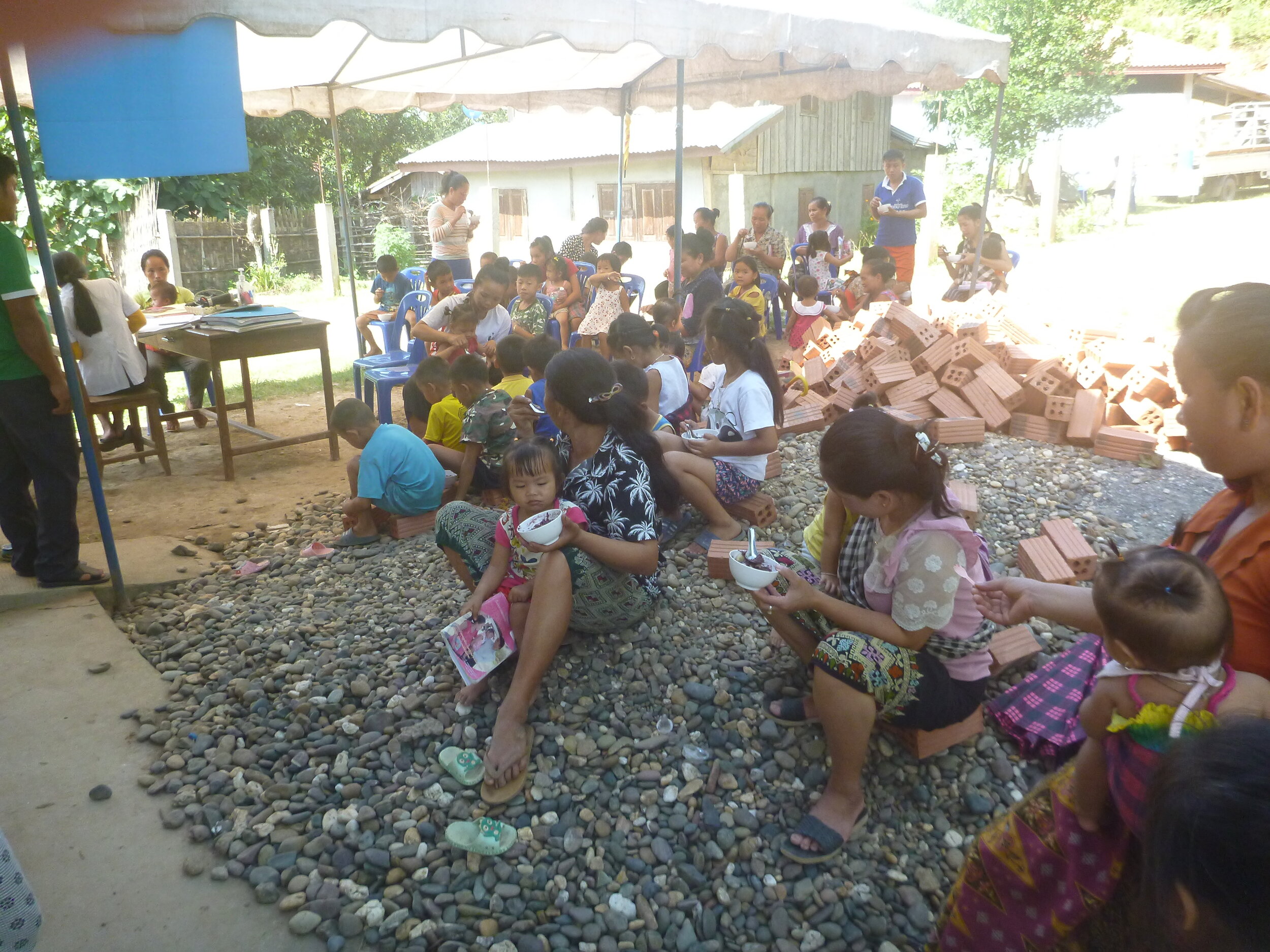
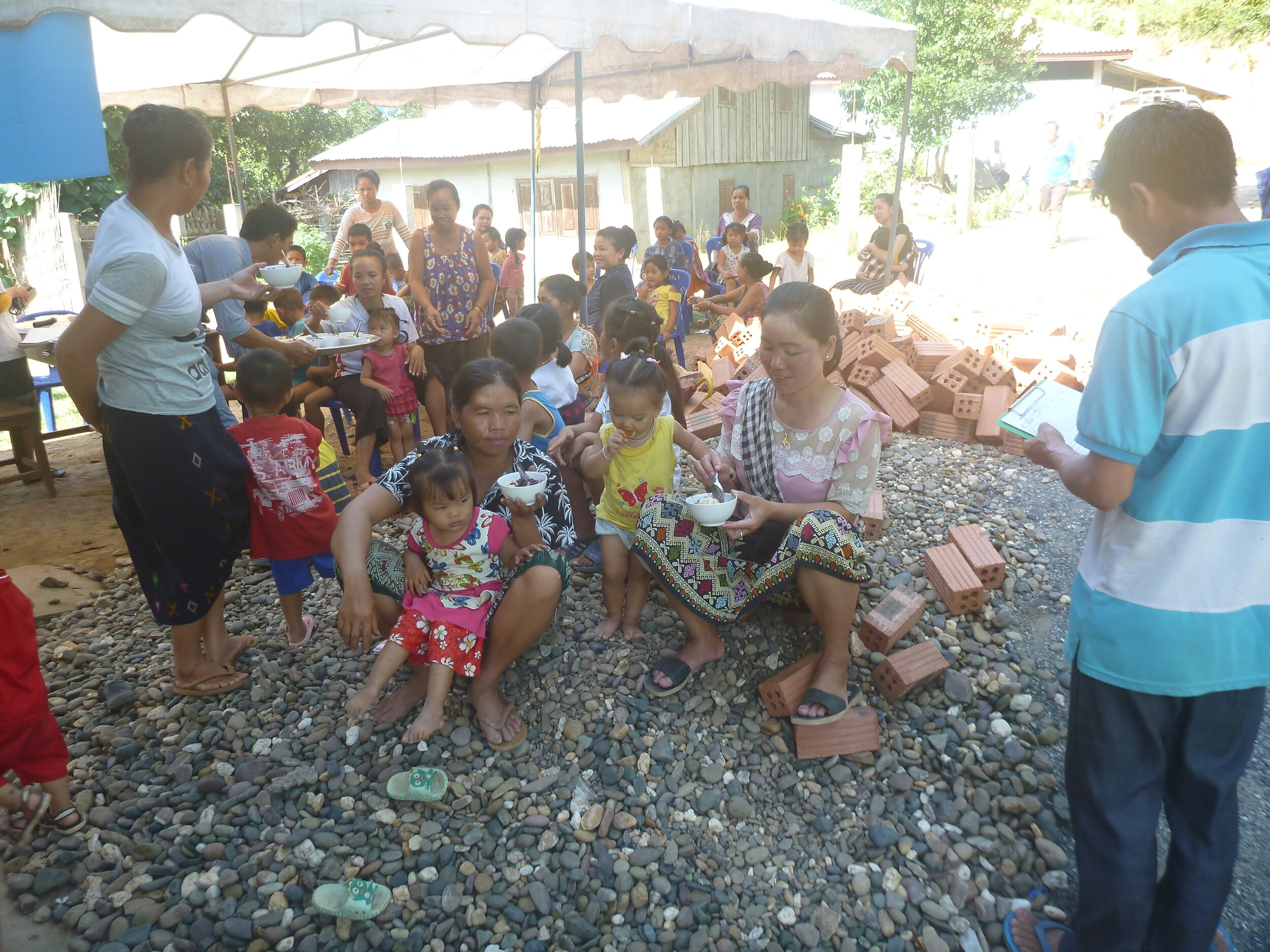
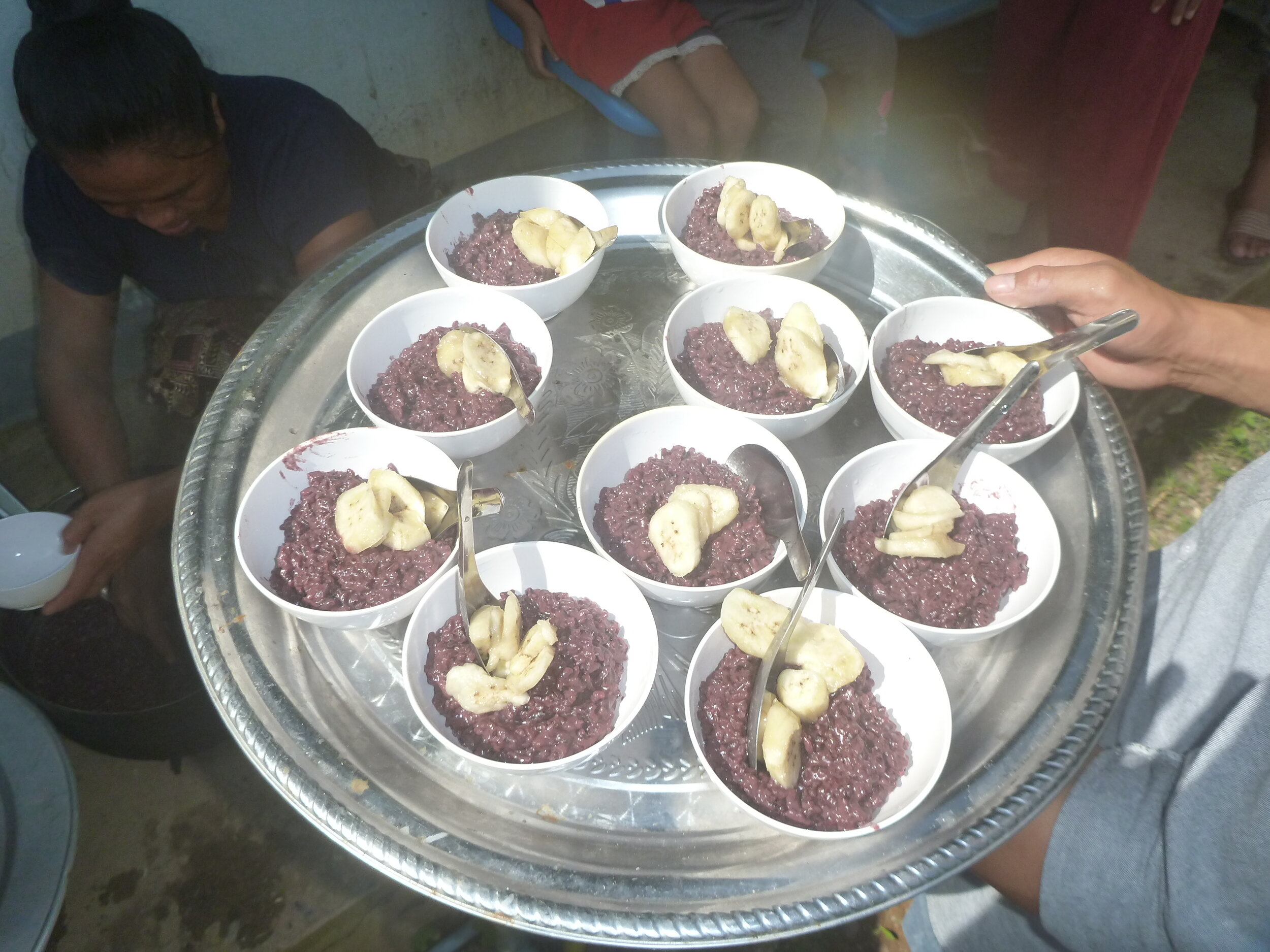
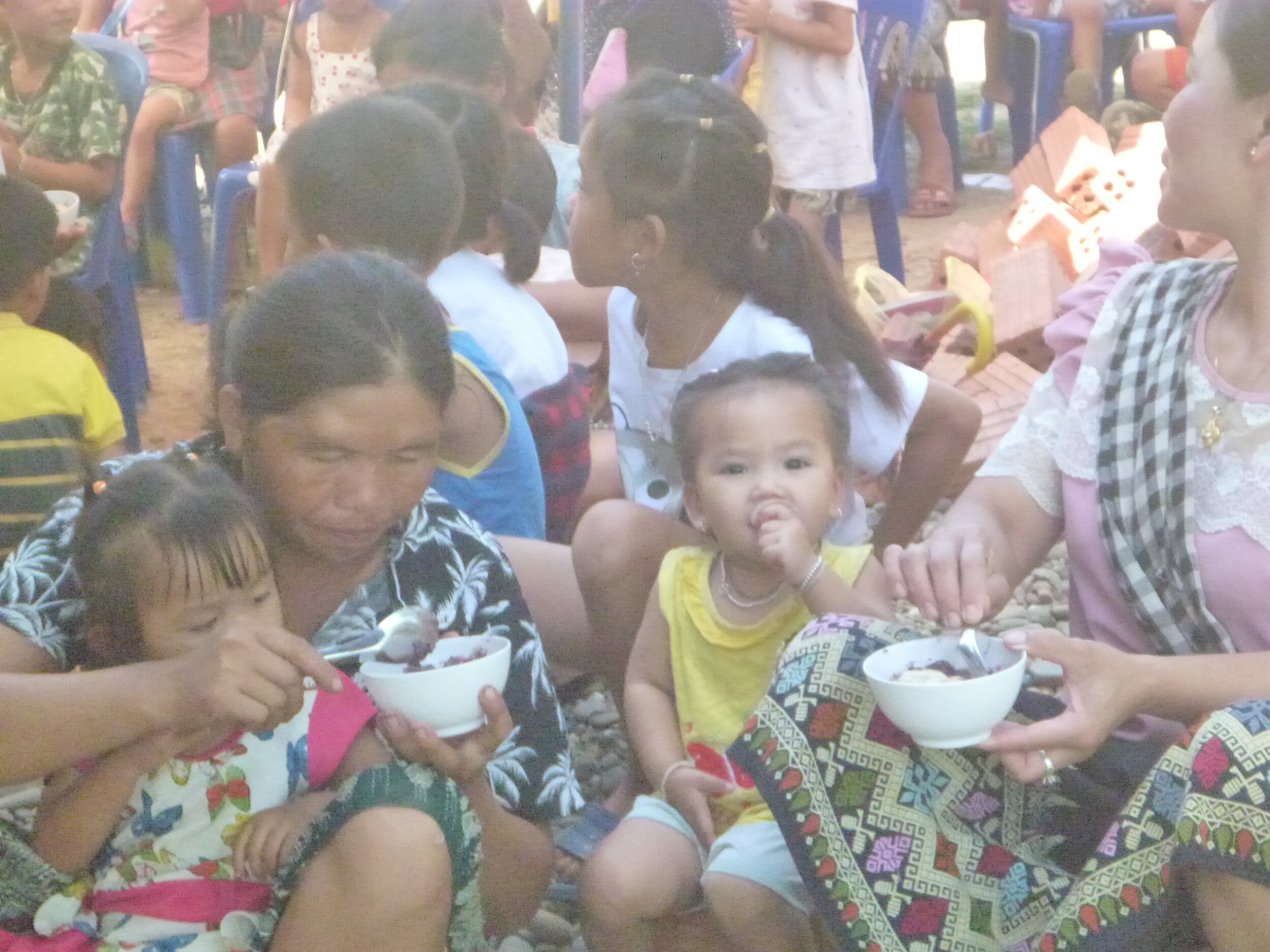
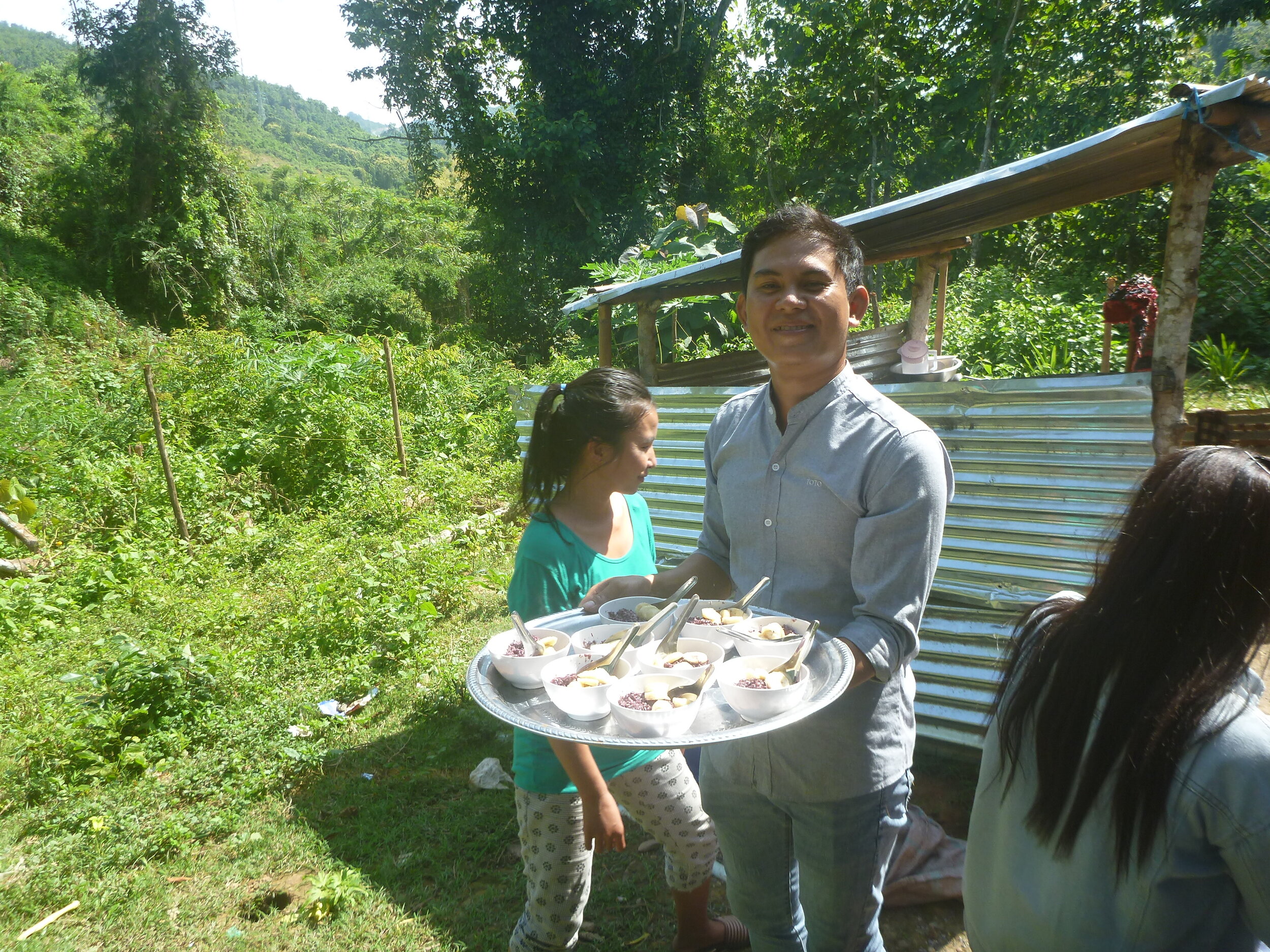
Once the rice was ready, out it went and after a few hesitant mouthfuls and mothers watching reactions, it all quickly disappeared! Plus seconds for many or take-away to any family and friends unable to attend.
Video Viewing
Any event, such as the Quarterly MNCH clinic, brings out quite a lot of participants and bystanders, all happily mingling and watching the proceedings. On the day there were 39 children with parents and 24 farmers in attendance.
While the rice was cooking and the children measured and weighed, it was a chance to show all the people two videos produced with the World Bank. The first video was to explain the benefits of milk and help dispel a few concerns. For instance, if someone is referred to as a buffalo as a jibe for being a bit slow, there was a niggle, that some people might think drinking buffalo milk may make you slow. We also needed to ensure that all milk collected was boiled correctly before being used. The second video was on some more of the technical components of raising buffalo covering a range of subjects such as breeding, feed, vaccinations and the process of milking.
Mineral Blocks
The video also spoke about mineral and medicated blocks for cattle. The blocks serve several purposes:
An easy way to distribute much needed additional vitamins and minerals particularly during the dry season
Reducing the incidence of liver fluke and;
Having the added benefit of reducing greenhouse gas emissions!
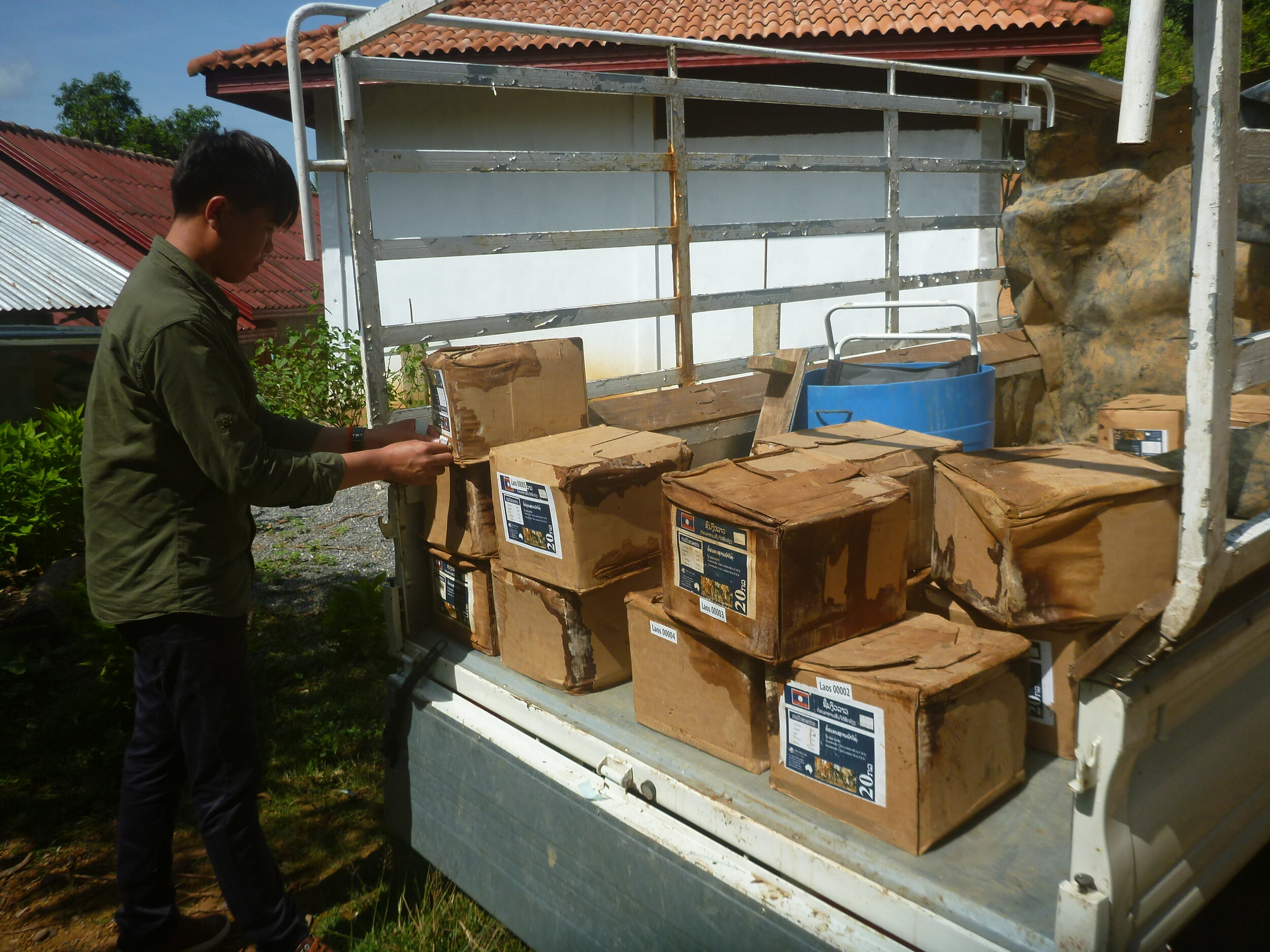
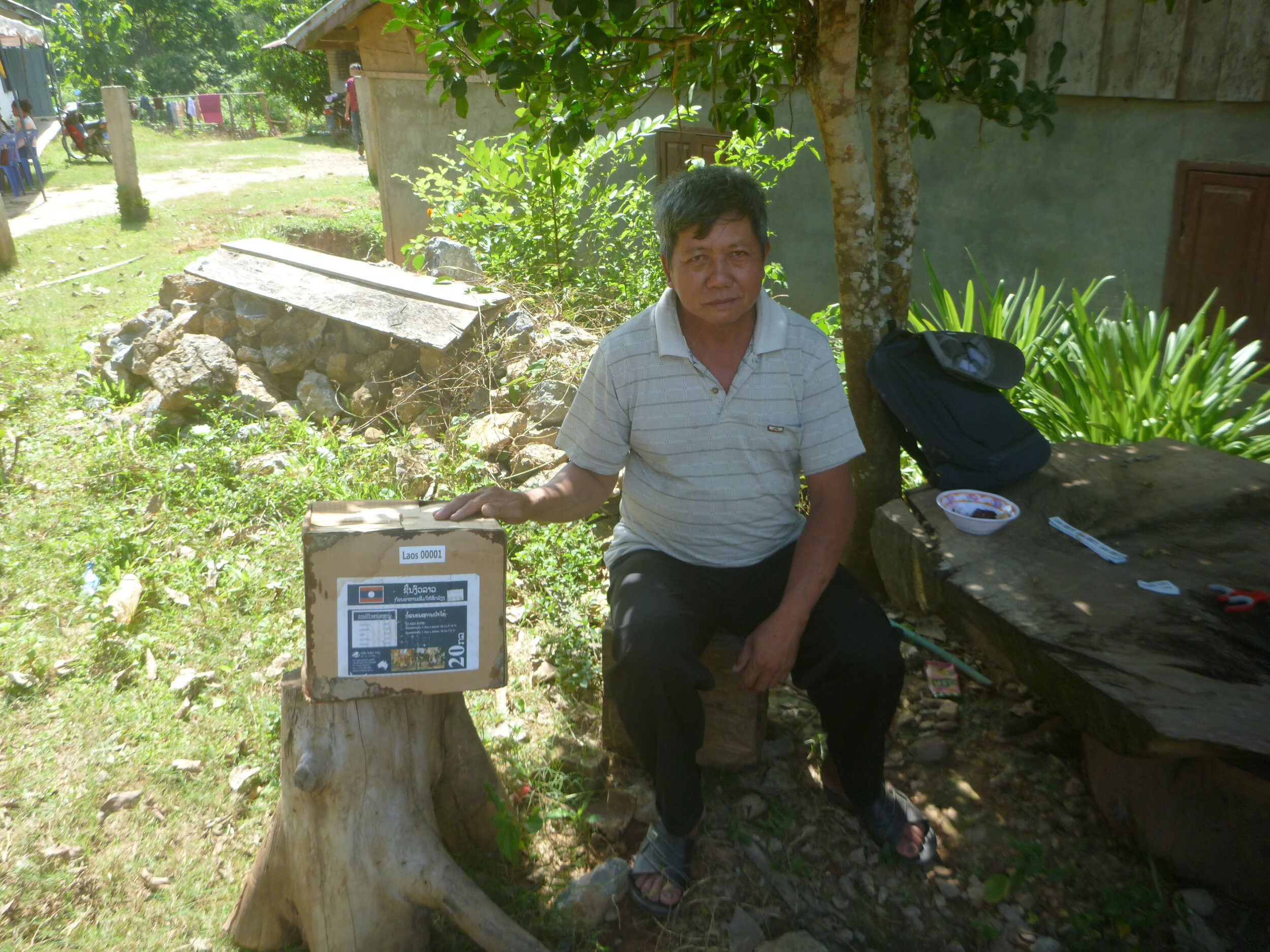
Each block weighs 20 kilos and will last one buffalo about three months. As part of a fantastic new business venture born from another BPP initiative, AgCoTech Laos will be producing and distributing mineral blocks for free to local farmers in exchange for carbon credits that they can sell to support the business. Many of the farmers had returned from a morning in the fields to attend the clinic. They were happy to receive mineral blocks for their animals. There is a protocol to follow to ensure that the blocks are all used by the recipients. So, there was a fun hour of taking photos and form filling with much good-natured laughter. This was the first time our team had completed the paperwork, and as the occasional person forgot their mobile number, they had to be reminded by friends and family.
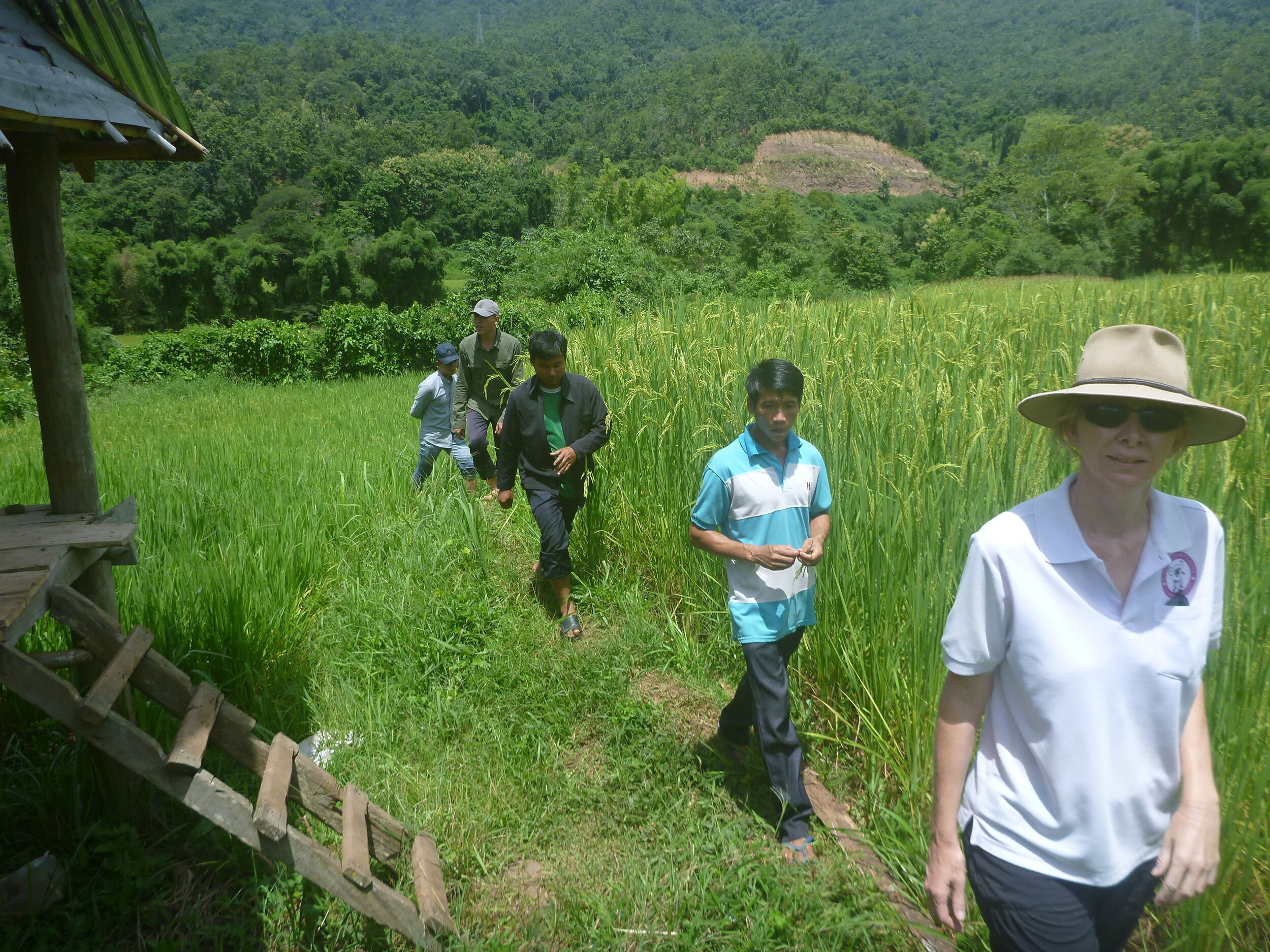
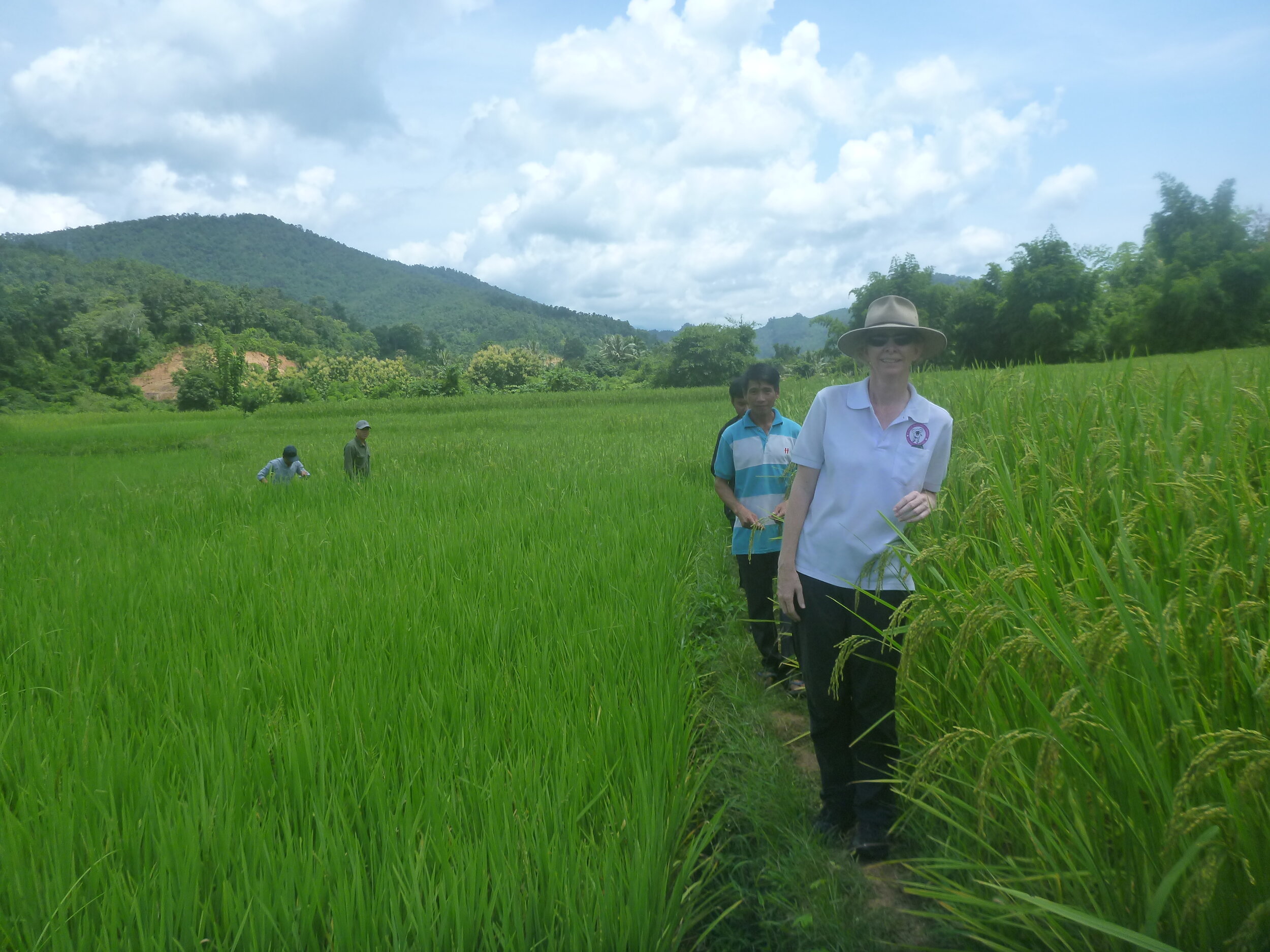
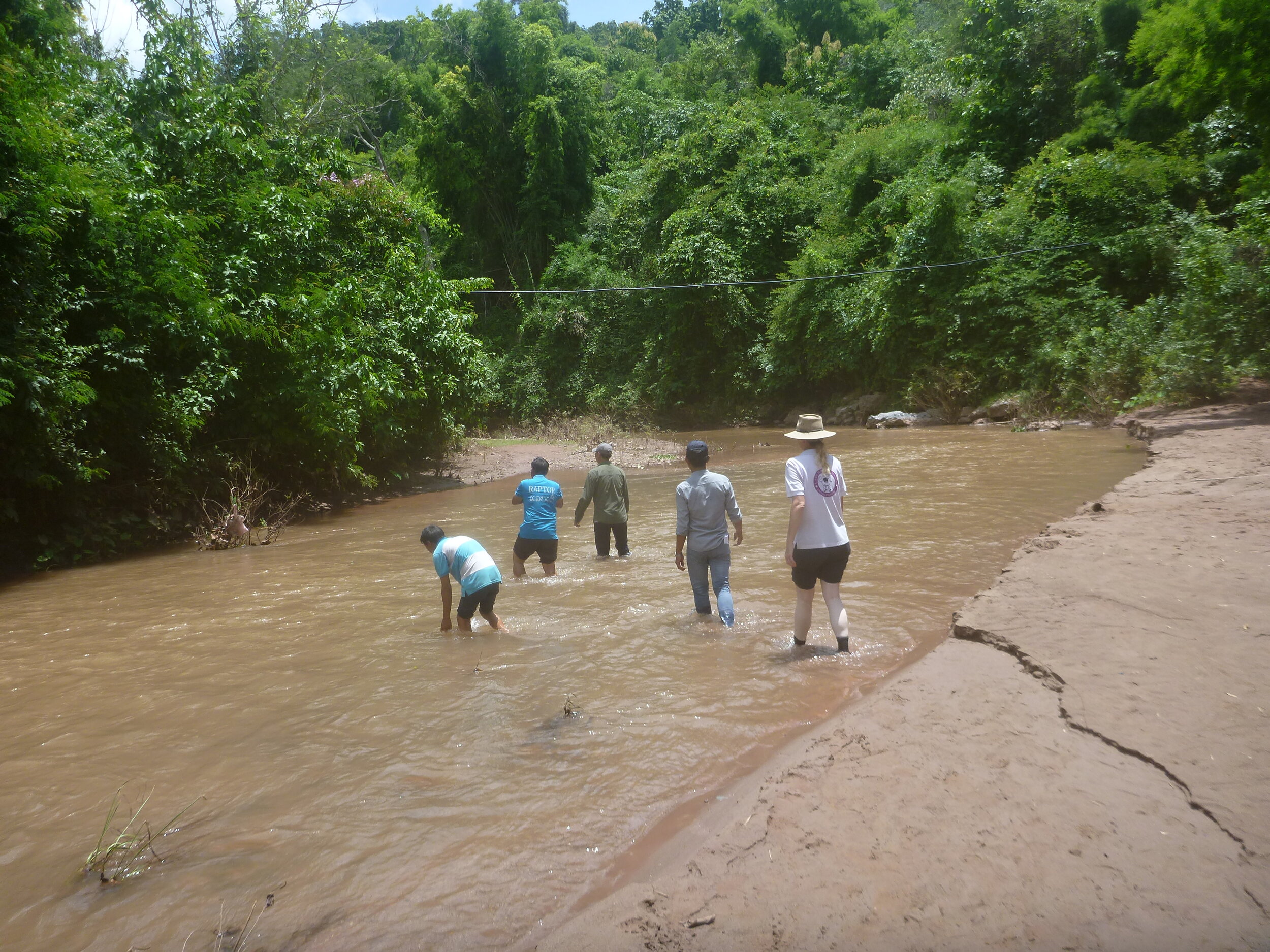
Milking Area
As the last mineral block disappeared into the fields by foot, bicycle or motorbike it was now time for us to walk to the other end of the village. The walk to reach the area, that has been fenced and planted with super Napier grass provided by LBD, was good exercise. At the same site, are ongoing preparations for the space to be used for milking. To get there meant first crossing the stream which due to the rain overnight was above my knees. I am reasonably tall, so for the Laos team it was more like thigh height, but no one blinked twice as this was the way to the rice fields where everyone goes every day plus the water was wonderfully cool, it was a shame we couldn’t stop for a swim! Then, through the rice fields to an area cleared, ready for construction to start. Honestly, the buffalo have the most scenic spot; rice paddies, rolling hills and a stream babbling in the background. There has been a bit of rain, and the Napier grass is coming along well. However, so are the weeds, so all the 25 families participating in the program will convene in a few days to cut them back. After the first harvest, the weeds won’t be as much of an issue.
More conversation followed on what building materials will be required and when to start building. The chief Mr. Khampeng proposes September is the best time as the rice will be harvested in October so everyone will be pretty busy. The timing all fits together well as in Laos there is a peak calving period with many buffalo being born in the dry season which starts in November.
With the dates and to-do list discussed, we headed back to the village and into the truck back to the farm.
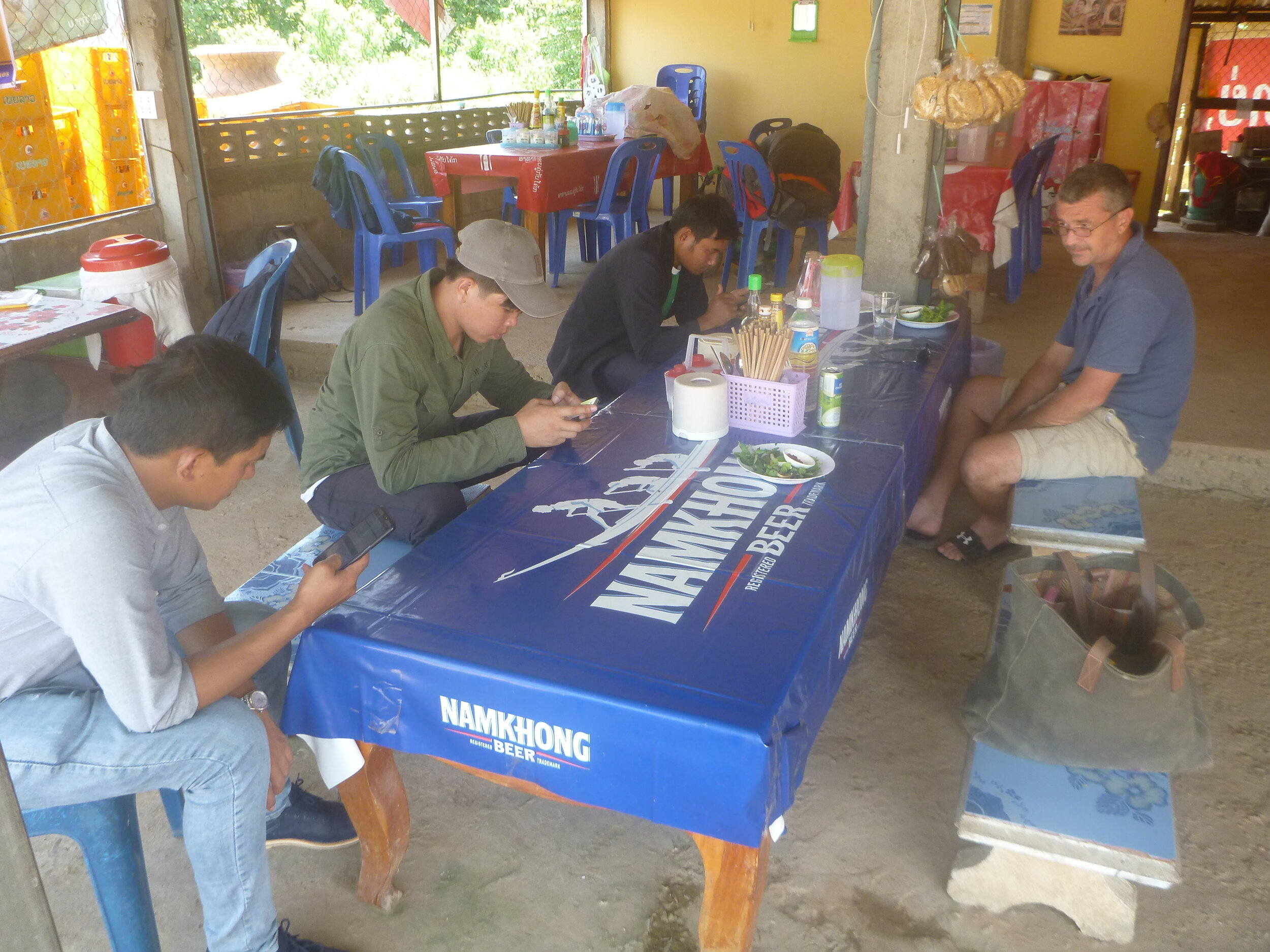
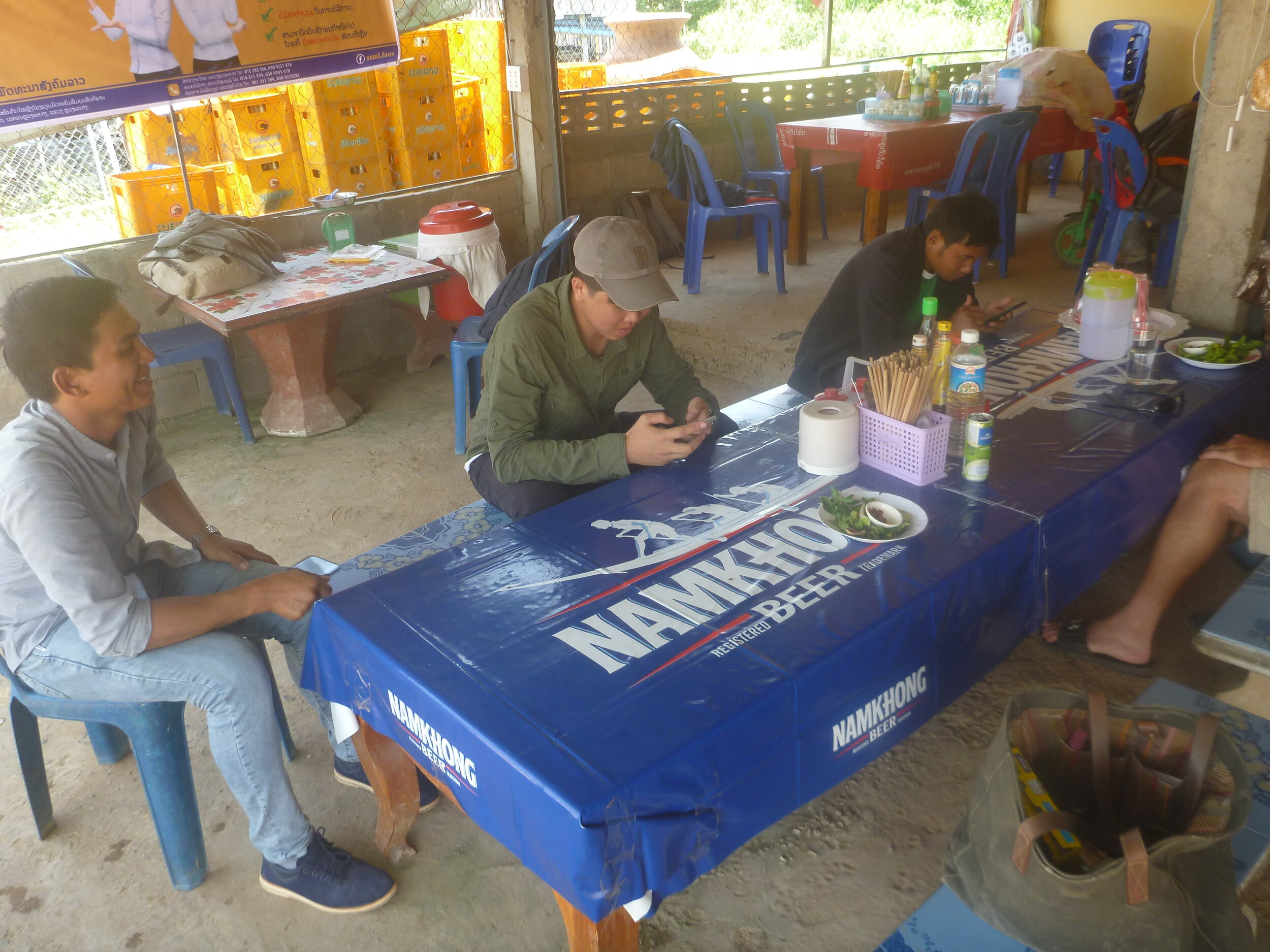
Late Lunch
After a full day of working and walking, everyone was ready for a late lunch at a little roadside restaurant near the ferry crossing, which is famous for having delicious pho, a local soup. Everyone tucked in and as usual, Songkham puts in too much chilli and is happily crying as he eats his hot hot soup as the temperature registers at 41 degrees celsius. Of course, once back in range for a mobile everyone has a soup spoon in one hand and mobile phone in the other. Some things are the same the world over!


